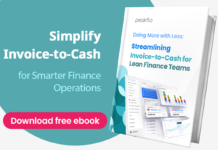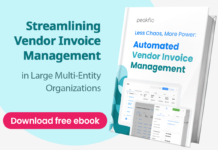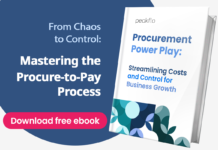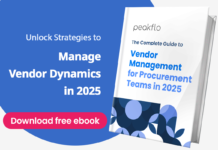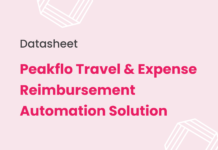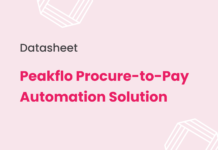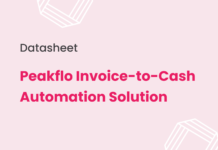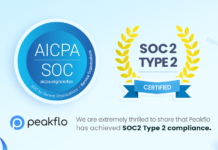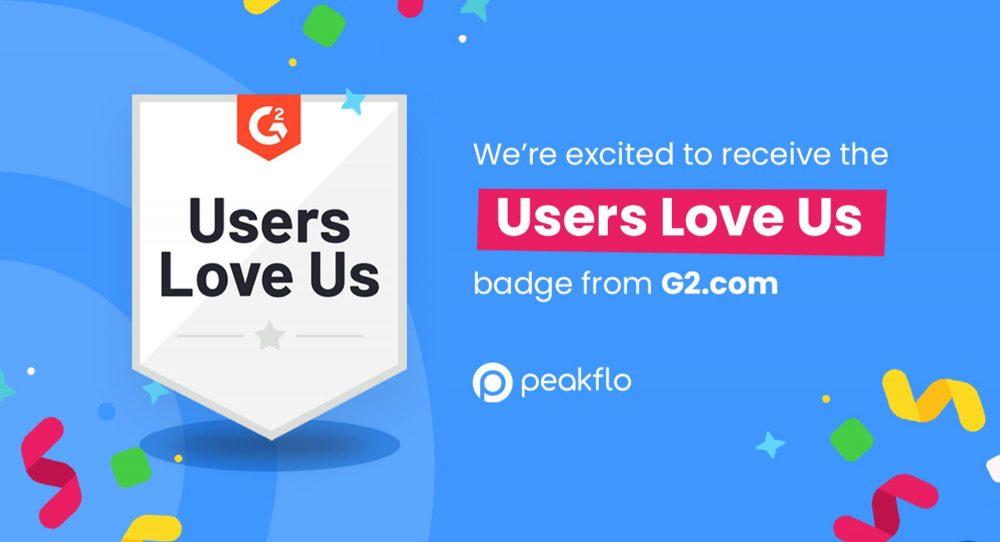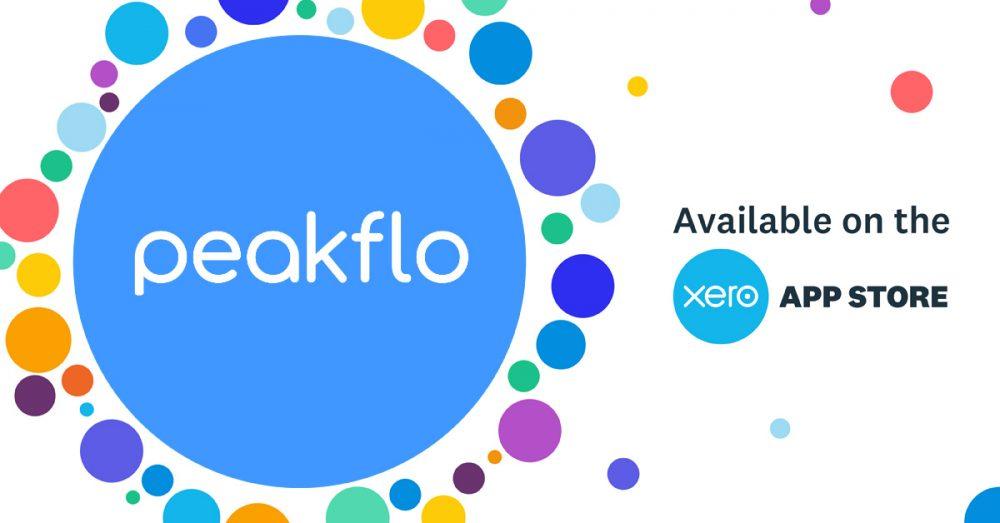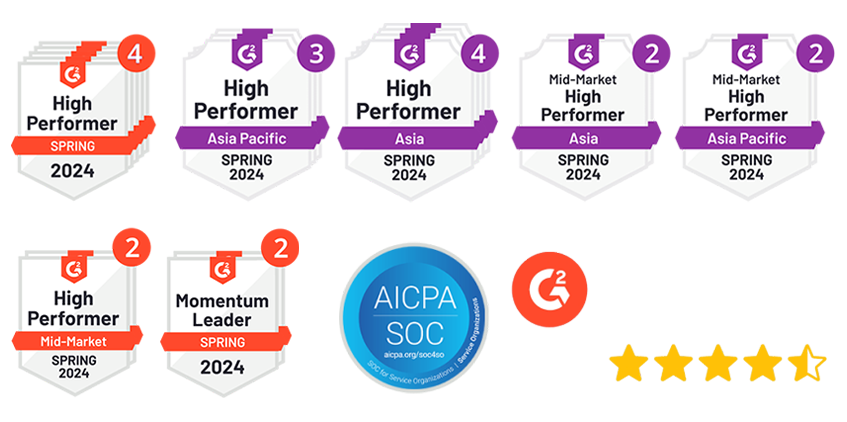Traditional OCR technology can be a challenge for businesses handling complex documents. These systems struggle with varied layouts, handwritten text, and structured elements, such as tables and charts. Understanding the limitations of conventional document extraction and being aware of advanced alternatives is crucial for maintaining efficient document workflows and ensuring accurate data processing.
Agentic Document Extraction processes a typical document in just 8 seconds, handling hundreds to thousands of pages per minute. This approach functions as a smart digital teammate that reads and interprets documents the way a human analyst would, moving far beyond the basic text recognition capabilities of traditional OCR.
What makes this technology different? Agentic document extraction achieves over 95% accuracy with built-in data validation. Document extraction AI has evolved significantly, enabling multi-step, intelligent processing pipelines that adapt to document variations while deriving deeper insights from the extracted information.
Agentic document extraction breaks through the limitations of traditional OCR by adopting Agentic Object Detection technology that simulates human understanding. While conventional document extraction methods struggle with varied layouts, this advanced approach treats documents as structured visual representations. This ensures verifiable references and remarkably fewer hallucinations during document text extraction.
This guide will show you why Agentic Document Extraction represents the future of document processing and how it can transform your organization’s approach to handling documents in 2025.
What is Agentic Document Extraction?
Agentic Document Extraction represents a major evolution in document processing technology that extends far beyond conventional text recognition capabilities. This approach employs artificial intelligence to actively interpret document content, understand its context, and determine the most business-relevant information with minimal human intervention.
At its core, agentic document extraction is a specialized AI application designed to extract valuable data from unstructured documents such as scanned images, PDFs, and handwritten forms. Rather than merely converting images to text, this technology breaks documents into components and reasons about them systematically.
The key distinction lies in how these systems process documents—they don’t just “see” text; they comprehend the entire document as an integrated whole, including its visual elements, spatial relationships, and contextual meaning.
How does it differ from traditional OCR
Traditional OCR technology has served businesses well for basic document digitization needs; however, its limitations become increasingly apparent when dealing with modern business document workflows. Here are the fundamental differences:
1. Structural Understanding vs. Text Extraction
- Traditional OCR: Simply converts document images into machine-readable text
- Agentic Extraction: Identifies and preserves tables, forms, flowcharts, checkboxes, and other structured elements
2. Contextual Awareness
- Traditional OCR: Lacks understanding of relationships between document elements
- Agentic Extraction: Recognizes connections between data points (e.g., linking captions to images, or invoice numbers to line items)
3. Processing Capabilities
- Traditional OCR: Struggles with unstructured layouts, handwritten text, poor image quality, and complex formatting
- Agentic Extraction: Handles diverse document types without templates or training, adapting dynamically to new formats
4. Visual Grounding
- Traditional OCR: Provides extracted text without source reference
- Agentic Extraction: Links every extracted element to its exact location in the original document through bounding box coordinates, enabling verification
5. Error Handling
- Traditional OCR: Often requires manual validation to correct errors
- Agentic Extraction: Reduces errors by up to 70% through built-in validation rules and contextual understanding
Why it’s gaining popularity in 2025
What’s driving this rapid adoption? Several factors are making agentic document extraction the preferred choice for businesses:
Businesses are increasingly dealing with complex, multi-format documents that traditional systems struggle to process accurately. Agentic extraction offers a solution by handling documents with varying layouts, mixed content types, and intricate data relationships.
The technology has matured significantly, with accuracy rates now exceeding 95% even for challenging documents. This level of reliability makes it viable for mission-critical business operations across industries.
Agentic systems dramatically reduce processing times, turning hours of manual work into minutes of automated processing. For organizations handling large document volumes, this efficiency gain translates directly to a competitive advantage.
The emergence of visual grounding capabilities addresses a critical weakness in AI-powered document processing: verifiability. Linking extracted data directly to source locations in documents provides an audit trail that builds trust in automated processes.
According to industry research, agentic AI and multi-agent systems are now among the most interesting areas in AI development, with 52% and 45% interest rates, respectively. Forrester has even listed agentic AI among the top emerging technologies for 2025.
The technology’s ability to adapt to new document formats without requiring manual reprogramming makes it especially valuable in industries with diverse document types, such as insurance, healthcare, and finance. This adaptability ensures scalability and long-term value as business requirements evolve.
How Agentic Document Extraction Works

Image Source: LeewayHertz
Agentic document extraction operates through a sophisticated multi-step process that preserves both content and context. This advanced approach treats documents as structured visual entities instead of mere text collections, enabling businesses to extract meaningful information while maintaining document integrity.
Visual grounding and layout preservation
Visual grounding forms the foundation of agentic document extraction—a critical capability that links every extracted element to its exact position in the original document. Through bounding box coordinates stored alongside extracted elements, the system creates verifiable references that allow users to trace AI-generated answers directly back to their source.
What does visual grounding deliver?
- Answer verification by connecting responses to the original source information
- Trust building through transparent, traceable insights
- Elimination of manual document searches after receiving AI responses
The technology conducts a thorough layout analysis to comprehend document structure. It identifies structural elements like headers, footers, columns, and page numbers—preserving the spatial relationships that convey meaning. This comprehensive understanding ensures that extracted data maintains its contextual significance throughout the processing workflow.
AI agents and contextual understanding
Agentic document extraction employs intelligent AI agents that work independently to identify, interpret, and extract specific information with minimal human intervention. These agents function as digital teammates that understand document structure and can locate relevant information even in unexpected locations.
These agents utilize advanced computer vision algorithms to perceive spatial awareness and contextual meaning. This enables them to recognize how information is organized hierarchically and contextually, particularly valuable for complex documents like financial statements or technical reports. The result is an extraction that maintains business context rather than simply converting images to text.
Handling tables, checkboxes, and charts
Agentic document extraction excels at processing complex visual elements that traditional systems struggle with. The system captures important details from various structured components:
Tables are identified and processed as complete units, maintaining their row and column structure alongside data relationships. Selection marks (checkboxes) are detected with their selection state preserved. Figures and charts are captured as unified elements with their visual context intact, allowing for comprehensive data interpretation.
This structured approach ensures that businesses can extract complete information from documents without losing the relationships between different data elements.
Document text extraction with accuracy
The accuracy improvements in document text extraction come from the system’s ability to maintain contextual relationships between elements. Instead of flattening everything into text as traditional OCR does, agentic document extraction retains visual and spatial context throughout the process.
This contextual preservation eliminates errors and partial interpretations common in text-only analysis. The system processes documents rapidly, handling a typical document in just 8 seconds and processing hundreds to thousands of pages per minute. This removes pre-processing bottlenecks that often slow down traditional document processing pipelines.
Some implementations achieve 60-80% reductions in manual data entry time. Through this comprehensive approach, agentic document extraction creates a flywheel effect where each successfully processed document improves the system’s accuracy, compounding value over time.
Key Benefits Over Traditional OCR
Image Source: Affinda
Traditional OCR technology falls short when businesses handle increasingly sophisticated documents. The limitations of conventional extraction methods have become more apparent as document complexity grows. Agentic document extraction offers substantial advantages that address these challenges directly.
1. Better accuracy with complex layouts
Agentic document extraction excels at handling documents with intricate structures and varied elements. The technology accurately processes tables, charts, and handwritten text that traditional OCR typically misinterprets. This approach reduces errors by up to 70% when dealing with complex layouts.
The system captures critical document elements like checkboxes, flowcharts, and financial tables while preserving their structural relationships. This eliminates the partial interpretations common in text-only analysis, providing complete data capture for precise insights across industries.
2. Verifiable data with visual grounding
Visual grounding represents a fundamental advancement over traditional OCR. This capability links every extracted element to its exact location in the original document through bounding box coordinates.
Visual grounding delivers three essential benefits:
- Pinpoints exact locations of visual elements and text in documents
- Enables answer verification by linking responses to source information
- Builds trust through transparent, traceable AI-generated insights
3. Reduced manual review and errors
Built-in validation drastically reduces the need for human oversight. Agentic document extraction achieves over 95% accuracy with touchless processing, allowing businesses to apply validation rules, flag inconsistencies, and automate compliance checks.
Document extraction AI minimizes repetitive tasks like sorting, labeling, and data entry. This approach cuts down on manual touchpoints and ensures cleaner data for downstream AI and analytics.
4. Faster processing and automation
Speed represents another crucial advantage. Agentic document extraction processes a typical document in just 8 seconds and handles hundreds to thousands of pages per minute. The technology removes pre-processing bottlenecks that often slow down traditional document processing pipelines.
Ready to see Peakflo Agentic Workflow in action? Book a no-obligation demo with our experts and explore how agentic automation can transform your operations.
5. Improved compliance and audit trails
For highly regulated industries, compliance advantages are substantial. Agentic document extraction creates detailed audit trails of all document processing activities, providing essential transparency and accountability.
The technology automatically identifies and anonymizes personal data within documents, reducing the risk of unauthorized access. This capability is especially valuable for compliance with regulations like GDPR and HIPAA.
For businesses managing sensitive information, the technology maintains compliance with various standards, including ISO 27001, ISO 27017, ISO 27018, SOC 2, SOC 3, PCI DSS, FedRAMP High, and HIPAA. This comprehensive compliance coverage ensures businesses can process documents confidently regardless of regulatory requirements.
Real-World Use Cases Across Industries
Image Source: ABBYY
Organizations across diverse sectors are finding practical applications for agentic document extraction, delivering tangible improvements in efficiency, accuracy, and compliance. The technology’s ability to understand complex documents has made it invaluable for businesses handling document-heavy workflows.
Finance: Bank statements and invoices
Financial institutions pull data from complex financial statements, charts, and policy documents with remarkable precision. This enhances risk assessment by capturing nuanced details in claims and underwriting forms. The technology streamlines compliance processes with precise extraction of regulatory information, simultaneously accelerating payment cycles and improving cash flow management.
The technology enables rapid deployment and reliable outcomes without additional training requirements, making it ideal for scalable financial services automation across document-heavy workflows.
Healthcare: Medical forms and lab reports
Healthcare organizations face unique document challenges, with patient data scattered across multiple systems and formats. Agentic document extraction streamlines patient intake by accurately capturing data from complex medical forms and enhances clinical decision-making through precise extraction of lab results and medical histories.
The technology significantly improves billing accuracy while processing documents faster. Healthcare will contribute more than one-third of the projected 180 zettabytes of global data by 2025, yet currently, only 3% of healthcare data is effectively used.
Logistics: Bills of lading and customs forms
Logistics companies benefit through accelerated shipment processing, as the technology accurately extracts data from bills of lading and customs forms. Bills of lading detail shipper and consignee names, shipping instructions, item descriptions, quantities, and shipment terms.
The technology enhances inventory management through precise interpretation of complex warehouse documents and improves supply chain visibility by capturing detailed information from manifests and tracking reports. This approach eliminates manual errors, reduces processing times, and ensures consistent data handling.
Legal: Contracts and compliance documents
Legal firms expedite contract review by accurately extracting key clauses and terms from complex legal documents. The technology enhances case research by efficiently processing and summarizing court filings and precedents.
It improves compliance monitoring through precise interpretation of regulatory documents and updates. For organizations handling high volumes of contracts, the system can simultaneously analyze thousands of agreements to extract key data points and assess risk exposure across portfolios.
HR: Resumes and onboarding paperwork
Human resources departments automate document workflows for resumes and onboarding paperwork. The technology helps process various HR documents efficiently, extracting key information from resumes for faster candidate evaluation.
It streamlines onboarding by automatically digitizing and processing employment forms, reducing administrative burden while improving data accuracy. This automation helps reduce administrative costs and improves both employee and candidate satisfaction through faster processing.
Agentic Document Extraction vs OCR vs GPT
Evaluating document processing technologies requires understanding how Agentic Document Extraction, traditional OCR, and GPT models handle real business scenarios. The differences between these approaches determine which solution delivers the most value for your document processing needs.
Comparison of data handling capabilities
Agentic Document Extraction handles both structured and unstructured data with equal proficiency, linking extracted information to exact document locations. Traditional OCR merely converts printed text into digital form without maintaining structure. GPT models generate text responses effectively yet struggle significantly with complex tables and unusual layouts.
The data handling differences become clear when processing business documents. Agentic systems preserve table structures, maintain checkbox states, and capture chart relationships. OCR flattens everything into plain text, losing critical formatting. GPT models work well for conversational tasks but lack the precision needed for structured document elements.
Context understanding and layout awareness
Agentic systems preserve visual and spatial relationships within documents, treating them as structured visual entities. OCR ignores these structural connections entirely, focusing solely on character recognition. GPT technologies demonstrate contextual awareness but remain optimized primarily for conversational applications rather than document structure interpretation.
This contextual intelligence matters for business operations. When processing invoices, agentic extraction understands that certain numbers relate to line items while others represent totals. OCR sees all numbers as equivalent text. GPT can discuss invoice concepts but struggles to accurately extract specific data points from actual invoice layouts.
Business impact and automation potential
Agentic extraction reduces processing errors, enhances compliance capabilities, and supports comprehensive automation workflows. OCR requires substantial manual verification, creating bottlenecks in high-volume environments. GPT excels in conversational tasks but lacks the specialized capabilities needed for reliable document data extraction at scale.
Organizations seeking end-to-end document automation increasingly favor agentic approaches for their ability to deliver both accuracy and context preservation. The technology eliminates the manual validation steps that traditional OCR demands while providing the structured output that GPT models cannot reliably produce.
Peakflo Agentic Workflow for Document Extraction
Peakflo’s Agentic Workflow redefines document extraction by combining intelligent automation with visual grounding, built-in validation, and contextual reasoning. Designed for finance and operations teams, the workflow automates the extraction of key data from invoices, bills, contracts, and other complex documents—no templates or manual tagging required.
Every extracted element is visually anchored to its source in the document, ensuring complete traceability and audit-readiness. AI agents within the workflow independently identify tables, checkboxes, signatures, and line items—preserving structure and business logic throughout the process.
Processing times are slashed from hours to minutes, with documents handled in just seconds and accuracy exceeding 95%. Whether you’re reconciling multi-page invoices or reviewing contract clauses, Peakflo’s agentic workflow delivers speed, precision, and confidence, allowing finance teams to scale operations without scaling headcount.
Ready to reduce document handling time by 70% and eliminate manual errors? Book a demo to see the agentic advantage in action.
Conclusion
Traditional OCR technology has served businesses for decades, but its limitations create mounting challenges as document complexity grows. For organizations handling diverse document types with varying layouts and intricate data relationships, these conventional systems often fall short of business requirements.
Agentic document extraction offers a clear path forward for businesses seeking reliable document processing capabilities in 2025 and beyond. The technology handles complex layouts with superior accuracy, provides verifiable data extraction by linking every element to its exact source location, and minimizes manual review requirements while maintaining accuracy rates above 95%.
Managing document processing requires a proactive approach. Organizations that adopt agentic document extraction can effectively handle complex workflows while ensuring their data extraction processes remain accurate and efficient. The future of document processing is here—intelligent, reliable, and ready to solve the challenges that traditional systems cannot address.
FAQs
Q1. What is agentic document extraction, and how does it differ from traditional OCR?
Agentic document extraction is an AI-powered technology that interprets document content, understands context, and extracts relevant information. Unlike traditional OCR, which simply converts images to text, agentic extraction preserves document structure, handles complex layouts, and provides contextual understanding of the content.
Q2. What are the key benefits of using agentic document extraction?
The main benefits include improved accuracy with complex layouts, verifiable data through visual grounding, reduced manual review and errors, faster processing and automation, and enhanced compliance and auditability. This technology can achieve over 95% accuracy and process documents in just 8 seconds.
Q3. How does agentic document extraction handle complex document elements?
Agentic document extraction effectively processes tables, checkboxes, charts, and other complex visual elements. It maintains the structure of tables, detects checkbox states, and captures figures and charts as unified elements, preserving their visual context for comprehensive data interpretation.
Q4. In which industries is agentic document extraction particularly useful?
This technology has wide-ranging applications across various sectors, including finance (for processing bank statements and invoices), healthcare (for medical forms and lab reports), logistics (for bills of lading and customs forms), legal (for contracts and compliance documents), and HR (for resumes and onboarding paperwork).
Q5. How does agentic document extraction compare to GPT models in document processing?
While GPT models excel at generating text responses, they struggle with complex tables and unusual layouts. Agentic document extraction, on the other hand, preserves visual and spatial relationships within documents, treating them as structured visual entities. This makes it more suitable for reliable document data extraction at scale.


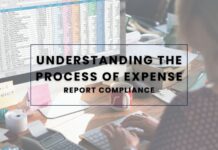







![Why AI Sales Calls Are Making Good Sales Reps Even Better [2025 Guide] ai sales calls](https://blog.peakflo.co/wp-content/uploads/2025/09/65168cf6-3001-4733-8cbc-12d5684cf449-218x150.webp)






